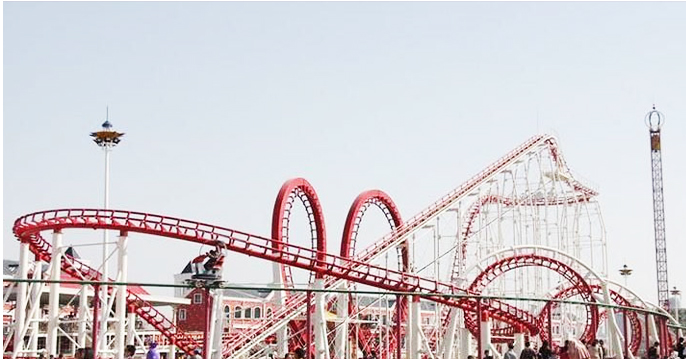- Albanian
- Arabic
- Belarusian
- Bengali
- Czech
- English
- French
- German
- Hebrew
- Hungarian
- Indonesian
- irish
- Italian
- Japanese
- kazakh
- Persian
- Russian
- Thai
- Uzbek
- Vietnamese
Top Companies Specializing in Roller Coaster Design and Engineering Expertise
The Intricate World of Roller Coaster Design Firms
Roller coasters are not just amusement park attractions; they are marvels of engineering and artistry that provide thrilling experiences for millions of riders globally. The design of these exhilarating rides is a complex process that involves creativity, physics, safety regulations, and a deep understanding of human psychology. This is where roller coaster design firms come into play, transforming dreams into reality through innovative designs and cutting-edge technology.
The Foundations of Roller Coaster Design
A roller coaster's design begins with a concept that aims to deliver an exhilarating experience. Designers consider various elements such as speed, height, track layout, and inversions. The pivotal role of physics cannot be overstated; gravitational forces and centripetal acceleration must be meticulously calculated to ensure that the ride is exciting yet safe. Whether it’s a wooden coaster with classic charm or a high-speed steel coaster with loops and twists, each type demands a unique approach to design.
Leading Design Firms in the Industry
There are several firms renowned for their expertise in roller coaster design. For instance, Bolliger & Mabillard (B&M), a Swiss firm, has established a reputation for creating some of the most iconic coasters worldwide. Known for their smooth rides and innovative elements, B&M has designed significant attractions such as “Fury 325” at Carowinds and “Shambhala” at PortAventura Park.
Another key player is Intamin Amusement Rides, based in Switzerland. Intamin has been involved in creating ground-breaking roller coasters like Kingda Ka in New Jersey, the tallest coaster in the world, and “The Smiler” at Alton Towers, which features a record 14 inversions. Their designs often incorporate new technologies and ideas that push the boundaries of what roller coasters can achieve.
Similarly, GCI (Great Coasters International) specializes in wooden roller coasters. With stunning designs that marry traditional aesthetics with modern technology, GCI has captivated audiences with coasters like “Lightning Racer” at Hersheypark and “Mystic Timbers” at Kings Island. Their emphasis on air-time hills and sharp turns showcases the skill involved in wooden coaster design.
The Design Process
roller coaster design firms

The journey from concept to construction involves multiple phases. Initially, designers collaborate with clients to understand the target audience and the desired experience. Sketching out various ideas and layouts, they incorporate elements like drops, loops, and airtime hills to craft a ride that excites adrenaline seekers.
Once the preliminary design is approved, detailed engineering calculations are performed. This ensures that the coaster meets safety standards, which are paramount in the amusement industry. Structural engineers analyze the materials and design tolerances, guaranteeing that the ride can withstand various stresses and strains.
After engineering assessments, physical models or simulations often visualize the ride experience. Advanced software allows designers to simulate real-world physics, providing insights into speed, G-forces, and rider experience. These tools are crucial in refining the design before moving to the physical construction phase.
Safety and Innovation in Design
Safety regulations in the roller coaster industry are stringent, requiring thorough testing and adherence to international standards. Design firms work closely with safety organizations to ensure that every aspect of the ride complies with regulations. This commitment to safety helps maintain public trust in the amusement industry.
Moreover, innovation plays a significant role in the evolution of roller coasters. Design firms continually explore new materials and technologies, striving for more efficient, durable, and thrilling designs. The rise of virtual reality (VR) coasters and interactive experiences are examples of how technology enhances the traditional roller coaster experience, offering riders novel ways to experience thrills.
Conclusion
Roller coaster design firms are crucial in shaping the amusement park landscape. By combining engineering expertise, creativity, and safety considerations, these firms design attractions that captivate and thrill riders. As technology continues to advance, the future of roller coasters looks more exciting than ever, promising new experiences that will keep adrenaline enthusiasts returning for more. For those eager to ride the next big coaster, understanding its design journey from concept to realization adds an extra layer of appreciation for these thrilling rides.
-
Flume Ride-Hebei Zhipao Amusement Equipment Manufacturing Co., Ltd.|Thrilling Water Attraction&Customizable DesignJul.30,2025
-
Flume Ride - Hebei Zhipao Amusement Equipment | Water Coaster, Thrilling DescentJul.30,2025
-
Flume Ride - Hebei Zhipao | Thrilling Water AttractionJul.30,2025
-
Flume Ride: Thrilling Water Attraction by Hebei Zhipao|Log Flume Manufacturers&Flume Ride DesignJul.30,2025
-
Flume Ride-Hebei Zhipao Amusement Equipment Manufacturing Co., Ltd.|Thrilling Water Coaster, Safe DesignJul.30,2025
-
Flume Ride-Hebei Zhipao Amusement Equipment Manufacturing Co., Ltd.|Thrilling Water Attraction, Safe DesignJul.30,2025
